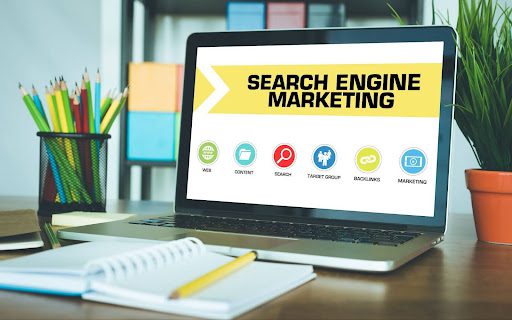Have you ever noticed those ads that pop up at the top of Google whenever you search for something? Or maybe you’ve seen local business listings showing up with maps and stuff? That’s search engine marketing in action!
Search engine marketing (SEM) involves promoting your business’s products or services through ads and optimized listings on search engines like Google. Companies use it to drive more visibility, website traffic, and sales.
The best thing is that it puts your promotions right in front of people actively searching for what you offer. When done right, SEM can be a powerful way to connect with motivated customers at just the right moment. Read on to explore its different types.
Pay-Per-Click (PPC)
One of the biggest types of search marketing is pay-per-click advertising, also known as PPC or sponsored search results. These are the text ads you see at the top and sides of the results pages.
With PPC, businesses bid on specific keywords and phrases related to their products or services. The highest bidders have their ads shown first whenever someone searches those terms.
You only pay a small fee if people click on your ad, which is why it’s called “pay-per-click.” It’s a great way to drive interested buyers straight to your website! According to Google’s Economic Impact data, businesses generally make an average of $8 in revenue for every $1 spent on Google Ads. That’s a pretty awesome return!
Of course, you need to pick good keywords and write clickable ad copy. But PPC is super handy for immediately reaching ready-to-buy customers.
Local SEO
For businesses with physical store locations, showing up well in local searches on Google and Maps is critical. This is what’s known as local SEO.
The goal is to optimize your business data listings to rank highly anytime someone searches for “pizza restaurants near me” or “plumbers in Cincinnati.”
Ensuring your address, hours, photos, and other details are perfectly consistent everywhere online is key for local rankings. You’ll also want to get listed on major directories like Google Business Profile, Yelp, Bing Places, and more. With more consumers now using search engines to find local businesses, local SEO should definitely be a priority.
Organic SEO
While local SEO focuses specifically on the map and business listings, organic search engine optimization (organic SEO) aims to rank your normal website pages higher in regular search results.
Optimizing your content with relevant keywords, fast loading times, mobile friendliness, and other best practices helps your website display higher organically for key topics and searches.
The higher you rank organically on page 1, the more free clicks and traffic you’ll get! Effective organic SEO takes consistent, long-term effort in creating high-quality content, building backlinks from other sites, and following Google’s recommended webmaster guidelines. But the payoff is huge because free clicks are always better than paid ones!
Explore and Experiment
There are also a bunch of other search marketing tactics not covered here, like shopping ads, video campaigns, voice search optimization, and more. Feel free to dig into those as you get the basics down!
The key is finding the right search marketing mix to drive maximum visibility for your specific business goals. Try different types and platforms, monitor your results closely, and keep optimizing! With patience and dedication, you’ll start showing up everywhere.
Ready to boost your online presence with SEM? Take your first step by reaching out to The Buy Local Media Group. Our digital experts can help you thrive. Contact us today!

